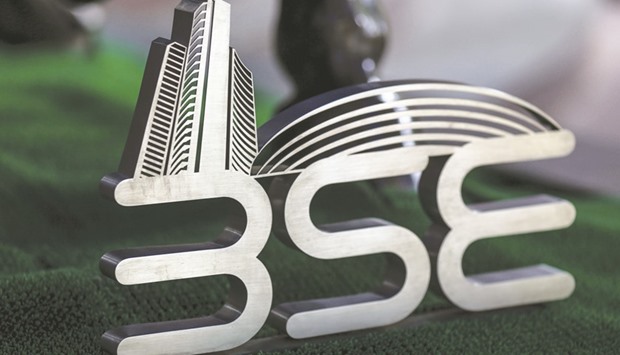Indian stocks declined after central bank Governor Raghuram Rajan left interest rates unchanged at his last policy call and investor concern about high valuations resurfaced.
Drugmaker Lupin was the worst performer on the S&P BSE Sensex. Idea Cellular slumped to its lowest since December 2012 after its earnings slumped 74% from a year earlier. ITC fell to a two-week low. Housing Development Finance Corp dropped for the first time in three days and Hero MotoCorp retreated 1.4%.
The S&P BSE Sensex closed 0.35% or 97.41 points, lower at 28,085.16 points, ending a three-day rally that sent it to a one-year high. Foreigners have bought a net $5.1bn of local shares this year, the most after Taiwan and South Korea, as flows to emerging markets accelerated amid a wave of global policy easing triggered by the UK’s vote in June to exit the European Union.
The 22% climb from a February low has pushed up the gauge’s price-to-earnings ratio to near the highest in 15 months.
“Our movement lately has been determined by foreign fund inflows and the market is giving away some of those gains,” Hemant Kanawala, head of equities at Kotak Mahindra Old Mutual Life Insurance, which has about $3bn in assets, said by phone from Mumbai. “Market expectation from the monetary policy was limited.
There’s not much to read into today’s correction.”
Foreign investors bought $176mn of local stocks on August 8. They’ve been net sellers on just two days since July 1, as flows to emerging markets accelerated amid a renewed wave of global policy easing. The Sensex’s price-to-earnings ratio of 16.3 compares with a multiple of 12.5 for an index of emerging markets.
Rajan held the repurchase rate at a five-year low of 6.50% as food prices threaten to push inflation above the nation’s target. The move was forecast by 27 of 29 economists in a Bloomberg survey, with two expecting a cut to 6.25%. The next governor will need to assess whether the revival of the monsoon has created room for India to follow nations like Malaysia and Australia in easing as risks to the global economy mount.
“We need further evidence that inflation is cooling off because recent data points were somewhat on the higher side,” said Kanawala. “If the effect of the monsoon plays out and inflation starts cooling off, a rate cut is a possibility. The market focus is now on who the next governor will be and the formation of the monetary policy committee.”
The committee would be in place to make the next decision on interest rates, Rajan told reporters after the policy review.
Although consumer inflation touched a 22-month high in June, reports of above-average rains in the annual June-September monsoon may provide some relief, particularly after the back-to-back droughts.
At the same time, higher pay for civil servants and a planned national sales tax threaten inflation goals of 5% in March 2017 and 4% a year later, plus or minus 2%.
Lupin tumbled 5.1%, the most since May 20. Standalone profit from operations before other income, finance costs and exceptional items was Rs14.5bn in the three months ended June, compared with Rs8.5bn a year earlier.
Including its subsidiaries, the figure was Rs11.1bn versus Rs7.2bn.
“The increase in difference between the standalone and consolidated profit from operations before other income, finance costs and exceptional items shows that the company is facing pressure from its units,” said Chokkalingam G., managing director at Mumbai-based Equinomics Research & Advisory. “This spooked the market.”
Meanwhile the rupee yesterday closed flat against the US dollar, while the 10-year bond yield closed at a new over-three-year low, after the Reserve Bank of India (RBI) left its key policy rate unchanged.
The home currency closed at 66.84 a dollar, unchanged from its previous close. The rupee opened at 66.84 a dollar and touched a high and a low of 66.84 and 66.98, respectively.
So far this year, the rupee is down 1.03%, while foreign institutional investors (FIIs) have bought $5.21bn in equity and sold $964.3mn in debt markets.
The 10-year bond yield hit fresh over-three-year low of 7.124%, a level last seen on 27 May 2013 from its previous close of 7.173%. It opened at 7.175% and touched a low of 7.115%.
Asian currencies gained. Japanese yen was up 0.24%, Malaysian ringgit 0.22%, Taiwan dollar 0.2%, South Korean won 0.19%. However, Philippines peso was down 0.11%, Singapore dollar 0.07%. The dollar index, which measures the US currency’s strength against major currencies, was trading at 96.411, up 0.02% from its previous close of 96.401.

The S&P BSE Sensex closed down 0.35% to 28,085.16 points yesterday
